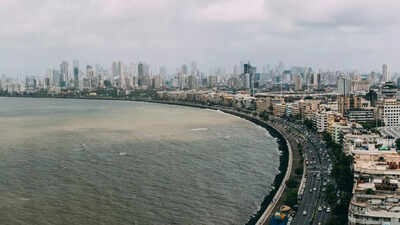ARTICLE AD BOX

Historically, southern city zones in India have been more affluent and better planned due to factors like prevailing winds, sunlight advantage for south-facing homes, and coastal trade hubs. While these historical influences laid the groundwork, modern urban development, IT growth, and infrastructure now increasingly shape wealth concentration in Indian cities.
In many Indian cities, it’s a noticeable pattern that the southern parts are often more affluent, greener, and better planned compared to other areas. Whether in Delhi, Mumbai, Bengaluru, or Kolkata, the southern zones tend to be pricier and feel more livable.
This isn’t a simple coincidence or just a real estate trend, but the outcome of centuries of history, geography, urban planning, and even climate factors shaping where wealth and development concentrate.

Mumbai
This goes back to the industrial history and the role of wind
According to CA Sarthak Ahuja, a banker, advisor and content creator, the roots of this pattern can be traced back to the Industrial Revolution in Europe. “Most European cities developed westward,” he explains, because prevailing winds in the northern hemisphere generally blow from west to east.
This meant factories built in the west blew pollution eastward, so the poorer working-class communities lived downwind, in the eastern parts, where pollution was higher and land values were lower.This pollution-driven segregation created a spatial divide, where the wealthier populations settled upwind in cleaner western areas. This model of spatial inequality was copied globally, including in colonial and post-colonial India, influencing how cities grew and which areas became affluent.
South-facing homes and sunlight advantage
Another important factor is sunlight, affecting the affinity for the direction of the land buyers and real estate value. In the northern hemisphere, homes facing south get more sunlight during the day, making them warmer and brighter. Historically, wealthier families preferred these south-facing homes, which gradually pushed up demand and prices in southern neighborhoods.
Coastal trade and geographical wealth hubs
India’s geography deepened this trend. Coastal trade hubs were mostly located in western and southern regions.
“When India started international trade, all the major ports, from Maharashtra to Kerala, were in the southwest, creating early economic hubs,” Ahuja adds. This concentration of trade and commerce in the southwest reinforced economic wealth, leading to further development and prosperity in southern city zones like South Bombay.
But there can always be exceptions
However, this classic wind and geography explanation does not hold everywhere today, particularly in rapidly urbanizing cities such as Bengaluru and Hyderabad. Entrepreneur Saransh Anand highlights in a LinkedIn post that in newer cities, economic corridors and infrastructure drive wealth patterns more than traditional geography.

Saransh Anand's post
- In Bengaluru, the southern parts like Koramangala and Electronic City are booming due to IT growth.
- Hyderabad’s wealthier areas are mainly in the western neighborhoods, such as Hitech City and Gachibowli.
- Similarly, Pune’s western suburbs and Gurugram’s southern sectors show post-liberalisation development trends rather than historical wind or sunlight effects.
So, while history and geography laid the foundation, modern infrastructure, metro connectivity, business parks, and urban planning now decide where prosperity and clusters occur in Indian cities.

 11 hours ago
3
11 hours ago
3









 English (US) ·
English (US) ·